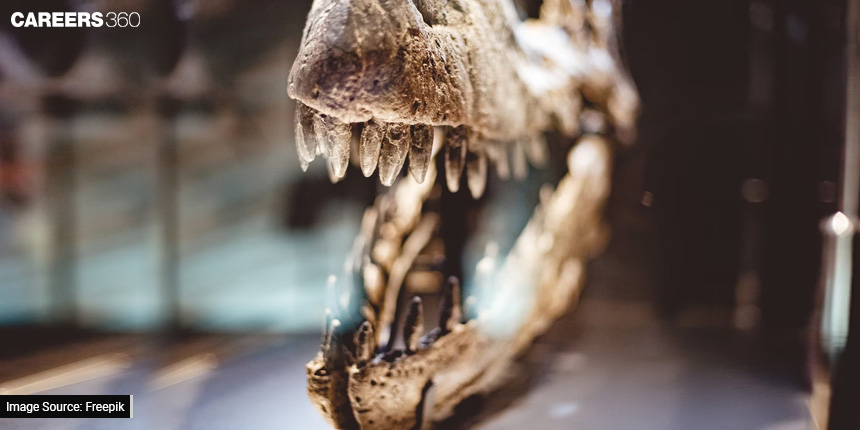Mass Extinction: How Does It Shape Our Ecosystem?
The biological process of aging slows down cell division with age, which slows down the biological processes of an organism. The continuous effect of aging causes damaging effects, leading to the death of organisms. Organisms have a definite lifecycle on this planet; however, they can die early if their survival is affected by external factors like predation or accidents.
This Story also Contains
- What Is Mass Extinction?
- Extinctions and Mass Extinctions
- Impact Of Mass Extinction On Ecosystems
- Effects Of Mass Extinction On Survivors

Every organism plays a vital role in the ecosystem, and their absence can affect the overall health of the ecosystem. Species are connected to one another and thus they influence the survival of each other. However, these organisms can become endangered or extinct following the consequences of various natural or artificial events like accidents, climate change, and more.
What Is Mass Extinction?
The permanent removal of a species from the planet is called extinction. The average rate of extinction is very slow and generally occurs over a period of time; however, when the disappearance of species occurs quickly or the events are sudden, it is known as mass extinction. Many species are affected at a single time, quickly, and globally, leading to mass extinction.
A very popular example of mass extinction is the one which occurred approximately 66 million years ago. The Cretaceous-Paleogene extinction, in which an asteroid event wiped out around 75 per cent of living species on the planet, including dinosaurs.
Mass extinctions are always huge and impose profound effects on life history and the Earth. They have a huge role in shaping the ecosystem, evolution, the current biodiversity, and the rate of evolutionary changes. Fossil records can assist in learning about the effects of mass extinctions, extinct species, and how the restructuring of the ecosystem took place.
Extinctions and Mass Extinctions
The main reasons for extinction include fluctuations or changes in the environmental factors that directly strike the habitat of organisms and also the food habits, as animals are dependent directly on the environment for food. Climate change, like improper precipitation or temperature, ocean acidity, oxygen levels, and more, disturbs the entire ecosystem, and results in triggering the process of extinction.
Human activities and their intervention in nature has been manipulating nature, thereby causing substantial harm to other living beings.
Mass extinction causes the disappearance of many species in a shorter time, so it occurs due to bigger accidents or events and not through slow, gradual changes. Asteroid events, huge volcanic eruptions, or extreme temperature changes affect many species at a single time and are likely causes of mass extinctions.
Volcanic eruptions and sudden switches in temperature can cause acid rain, the rise of sea levels leading to floods, and many other catastrophic events that affect multiple species simultaneously.
Also check - Condensation: What Is Science Behind Droplets Forming On Chilled Surface?
Impact Of Mass Extinction On Ecosystems
The vanishing of species from the planet impacts the ecosystem and nature in multiple ways, as every species performs some or another important task in the ecosystem. A few consequences of the mass extinction on nature:
Reorganisation of the ecosystem: Since mass extinctions wash away many lineages, they can kill the dominant organisms, resulting in the rise of recessive organisms or vice versa. Due to vacant niches, the surviving organisms occupy them, and massive reorganisation can be seen.
Burst of Evolution: When the ecosystem is reorganised, it forces the existing organisms to modify and develop. The mass extinction can also cause the living organisms to drift apart, leading to their isolation and the regeneration of new species.
Diversification: Mass extinction can largely decrease biodiversity because multiple species are killed. Once normal situations are restored, slowly, organisms start to develop, which later increases the diversity.
New Species: Living organisms ranging from minute bacteria to large dinosaurs can all face mass extinction. After their disappearance, some of their organisms or descendants can survive, giving rise to a new species altogether.
Changes In The Ecosystem: The ecological relationships and functioning of ecosystems are changed following the effects of mass extinctions.
Disturbed Food Web and Food Chains: The absence of certain species from the food chain and food web directly affects the organisms above or below that particular link. Survivors’ depending on the vanished species may also become a part of mass extinction due to the unavailability of food.
Effects Of Mass Extinction On Survivors
Mass extinction occurs due to huge accidents that not only affect organisms but also the environment. Sudden changes in the temperature destroy habitats like rising or falling sea levels, floods, droughts, and more that the organisms cannot tolerate, and hence they become targets of extinction.
The impact of mass extinction can be immense and cannot be restored or improved in a day. The destruction of the ecosystem affects the existing organisms and imposes survival risks on them as well. Unavailability of food, decreased quality of air and water, and weakened immunity due to climate change are some of the problems faced by existing organisms.
Also, check - How Does Physiology Influence Water Demand In People?
Applications for Admissions are open.
As per latest syllabus. Physics formulas, equations, & laws of class 11 & 12th chapters
JEE Main Important Chemistry formulas
Get nowAs per latest syllabus. Chemistry formulas, equations, & laws of class 11 & 12th chapters
JEE Main high scoring chapters and topics
Get nowAs per latest 2024 syllabus. Study 40% syllabus and score upto 100% marks in JEE
JEE Main Important Mathematics Formulas
Get nowAs per latest syllabus. Maths formulas, equations, & theorems of class 11 & 12th chapters
